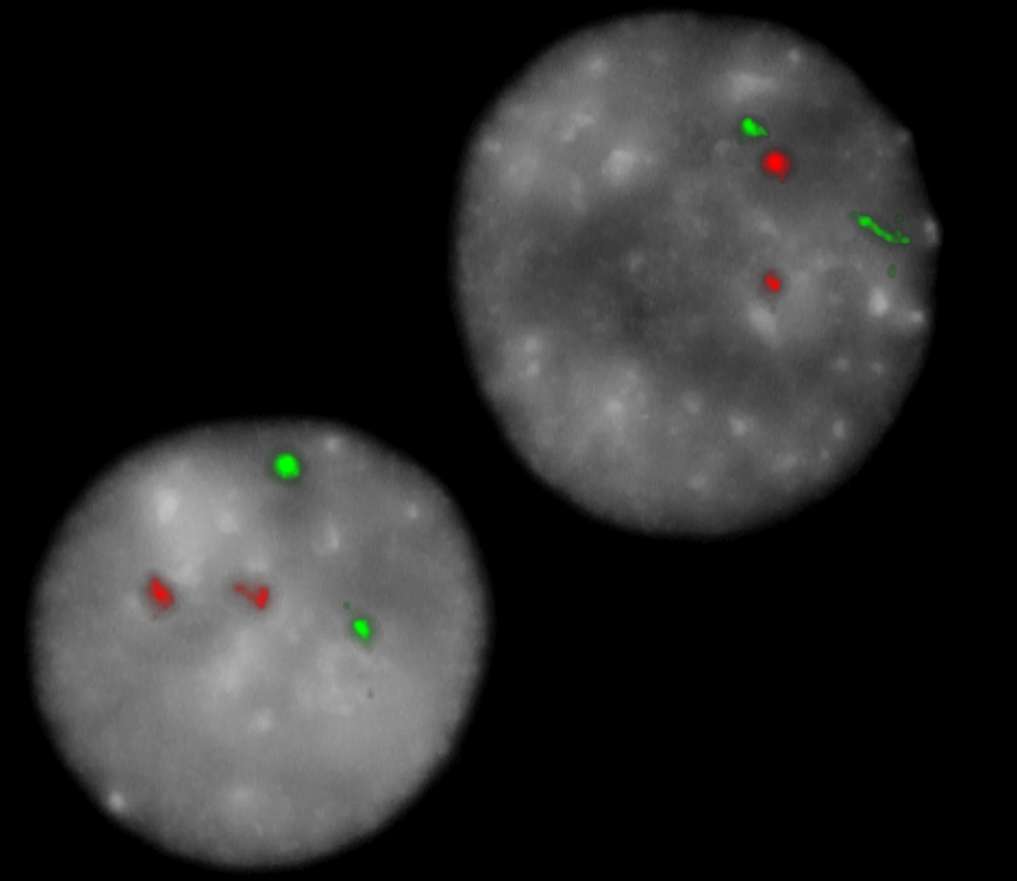
XL t(14;20) IGH/MAFB DF
Translocation/Dual Fusion Probe
- Order Number
- D-5105-100-OG
- Package Size
- 100 µl (10 Tests)
- Regulatory Status
- IVDD
IVDR Certification
This probe is IVDR-certified in compliance with the Regulation (EU) 2017/746 on in vitro diagnostic medical devices (IVDR).
MetaSystems Probes has already certified a wide range of FISH probes, according to IVDR.
This product remains IVDD-certified until further notice.

XL t(14;20) IGH/MAFB DF consists of a green-labeled probe hybridizing to the IGH gene region at 14q32.3 and an orange-labeled probe hybridizing proximal to the MAFB gene region 20q12.
Probe maps for selected products have been updated. These updates ensure a consistent presentation of all gaps larger than 10 kb including adjustments to markers, genes, and related elements. This update does not affect the device characteristics or product composition. Please refer to the list to find out which products now include updated probe maps.
Probe map details are based on UCSC Genome Browser GRCh37/hg19, with map components not to scale.
The most frequent primary abnormalities in multiple myeloma (MM) are trisomies of odd-numbered chromosomes or translocations involving the immunglobulin heavy chain (IGH) gene locus. The most common MM-associated IGH translocations are t(11;14), t(4;14), t(6;14), t(14;16) and t(14;20) in the order of their occurrence. The consequence of these rearrangements is the dysregulation of genes juxtaposed to transcriptional enhancers in the IGH locus. Prognosis and risk stratification strongly depends on the detection and interpretation of cytogenetic primary abnormalities. t(14;16) and t(14;20) are considered as high risk, t(4;14) as intermediate risk, and t(6;14) and t(11;14) as standard risk cytogenetic aberrations in patients with MM based on FISH testing. Secondary aberrations are also influencing the outcome.
Even if associated with poor prognosis in MM, monoclonal gammopathy of undetermined significance/smoldering multiple myeloma (MGUS/SMM) cases characterized by t(14;20) can be stable for years before progression occurs, whereas MGUS/SMM cases with t(4;14) and t(14;16) are showing a higher progression rate. The recurrent t(14;20) results in ectopic expression of the basic leucine zipper transcription factor MAFB which has an important role in lineage-specific hematopoiesis.
Clinical Applications
- Multiple Myeloma and Plasma Cell Neoplasms (MM)

Normal Cell:
Two green (2G) and two orange (2O) signals.

Aberrant Cell (typical results):
One green (1G), one orange (1O), and two green-orange colocalization/fusion signals (2GO) resulting from a reciprocal translocation between the respective loci.
- Boersma-Vreugdenhil et al (2004) Brit J Haem 126:355-363
- Ross et al (2010) Haematologica 95:1221-1225
- Rajan and Rajkumar (2015) Blood Cancer J 5:e365
Certificate of Analysis (CoA)
or go to CoA Database




